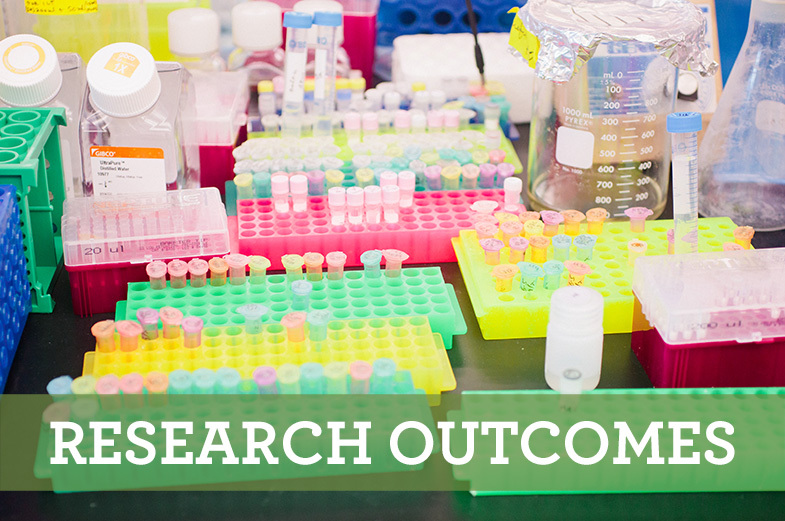Our St. Baldrick’s Foundation Research Outcomes blogs highlight examples of the progress your donations are supporting. This quarterly edition focuses on a new FDA approval for neuroblastoma, strategies to improve T cell functioning, understanding why some kids with medulloblastoma get sicker, and how secondary cancers increase the likelihood of future heart problems.
Thank you for making this research possible.

Repurposed Drug Receives FDA Approval to treat Neuroblastoma
The U.S. Food and Drug Administration (FDA) has approved a drug to treat neuroblastoma, an often-fatal childhood cancer, based on pioneering research by Dr. André Bachmann. Dr. Bachmann’s early work that helped lead to this approval was supported by the St. Baldrick’s Foundation.
“It can take 15-20 years and large amounts of money to develop a new drug,” says Dr. Bachmann, “and I thought, why not try to repurpose a drug that is already used in the clinic for another disease?” With this in mind he looked at Difluoromethylornithine, or DFMO, which was developed in 1978 and later used to treat West African sleeping sickness.
Dr. Bachmann’s preclinical work demonstrated DFMO’s remarkable ability to stop cancer cell growth. Building on his findings, pediatric oncologists developed clinical trials that led to the December 2023 FDA approval. This achievement offers hope to kids battling neuroblastoma, providing a potentially life-saving treatment option.
Helping T Cells Do Their Job Better
In the body, there are special cells called T cells that help fight against tumors. These T cells need to be in good shape and able to do their job properly to fight cancer. St. Baldrick’s funded researcher, Dr. Alex Huang and colleagues have found a protein called Piezo1 that seems to help T cells work better. They wanted to see what happens when they remove Piezo1 from T cells and then expose them to cancer. They found that models without Piezo1 in their T cells developed more aggressive tumors and didn’t respond well to treatments that usually help the immune system fight cancer. This study suggests that Piezo1 helps T cells do their job better when fighting cancer. While it’s not feasible at the moment to target Piezo1 in T cells for medical purposes, this research provides important groundwork for researchers to investigate further the possibility of therapies that target Piezo1 specifically in T cells.
Dr. Huang’s research was supported through a partnership with the Osteosarcoma Collaborative.
Understanding ecDNA in Medulloblastoma
Circular extrachromosomal DNA (ecDNA) found in tumors plays a big role in making cancer cells grow, resist drugs, and make patients sicker. St. Baldrick’s Scholar, Dr. Lukas Chavez and colleagues studied tumors from kids with the brain tumor medulloblastoma. They found circular ecDNA in about 18% of samples. Patients with this ecDNA were more likely to get sicker again and more likely to die within 5 years after being diagnosed. This study shows how common and diverse ecDNA is in medulloblastoma and how it can make the cancer more dangerous. Further research will focus on understanding how ecDNA contributes to cancer progression and treatment resistance, so researchers can explore how to help these patients.
Dr. Chavez’s grant is named for Hannah’s Heroes, a St. Baldrick’s Foundation Hero Fund established to honor Hannah Meeson.
Secondary Cancers Increase Likelihood of Heart Problems
Childhood cancer survivors face a high risk of serious health issues as they age, such as second cancers and heart problems. St. Baldrick’s Scholar Dr. Hari Narayan is working to find ways to better determine which children will develop heart problems. He recently looked at data and found that survivors who developed a second cancer between 15 and 25 years after their initial diagnosis were more likely to experience heart problems later on.
Dr. Naryan’s findings suggest that factors like the treatments used for the second cancer, such as chemotherapy and radiation, could contribute to this increased risk. These findings highlight the importance of monitoring childhood cancer survivors for heart problems and considering ways to reduce their risk, such as adjusting treatment and promoting healthy lifestyles.
Not every publication of research supported by St. Baldrick’s makes the news, but each one adds to the body of scientific knowledge that takes us one step closer to better outcomes for kids with cancer. Your continued support will make more research possible to Conquer Kids’ Cancer.
Donate now and help support research into better treatments for kids with cancer.
Read more on the St. Baldrick’s blog:

 SBF
Tweets »
SBF
Tweets »